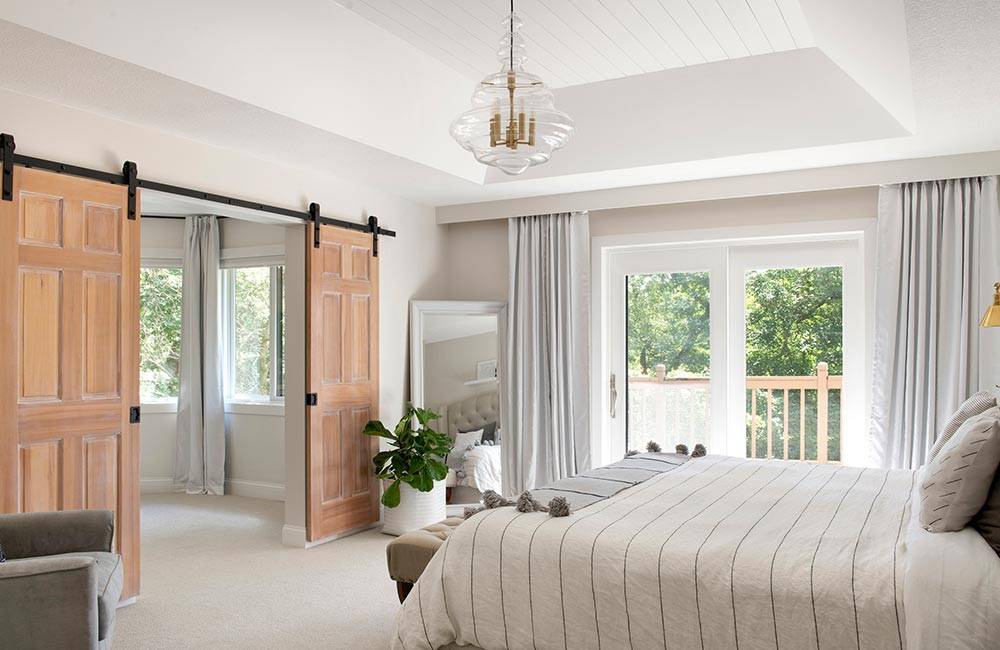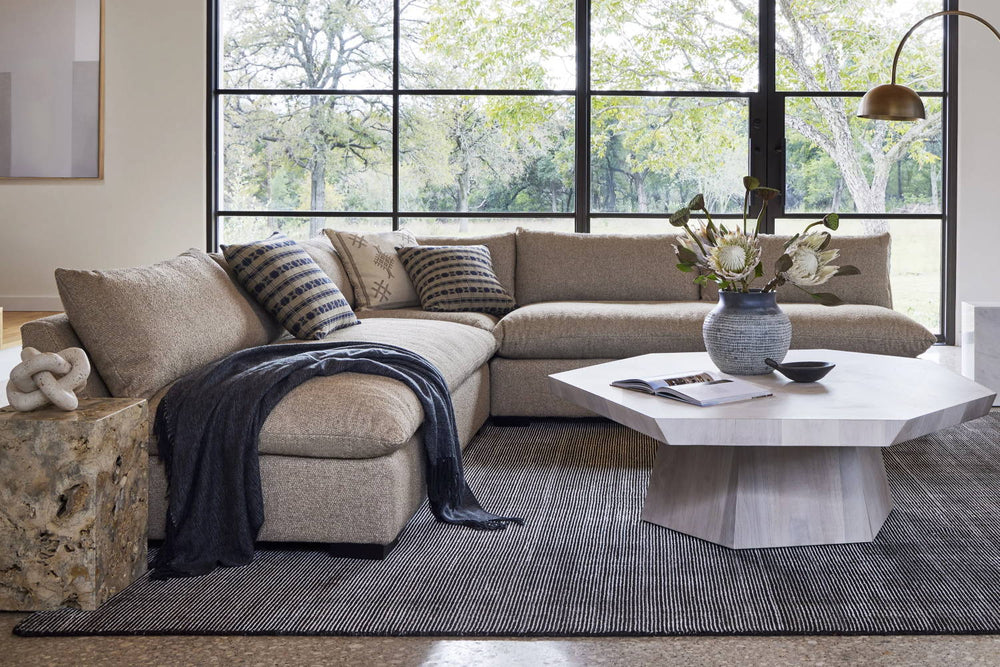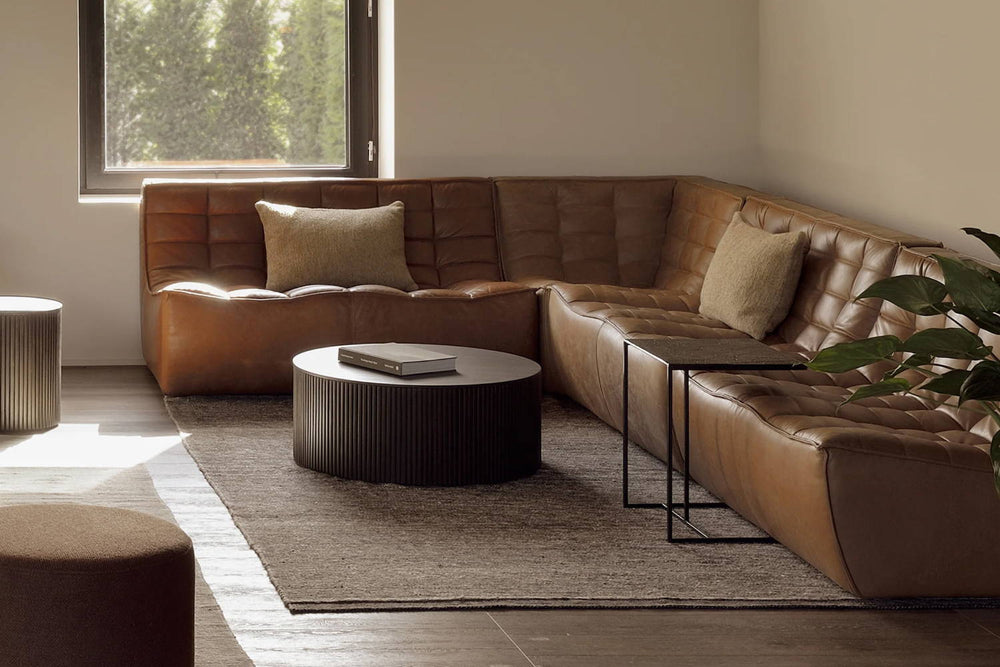Follow some basic rules to avoid common dining room table mistakes.
1. Measure your dining space.
Creating a beautiful and functional dining room begins and ends with a well chosen modern dining table—and making the optimal choice demands both time and careful thought. The size of your dining room will inform the size of your dining table, so measuring is absolutely imperative before you embark on a dining table shopping spree. While it's true that choosing the size of a dining table may appear to be just a matter of eyeballing it, there are specific measurements that will help avert common mistakes that detract from both the beauty and functionality of a dining suite. Once you have your dining room dimensions, the following measurements will be come essential:
SPACE SURROUNDING DINING TABLE
Comfortable dining table proportions allow enough surrounding room for maneuvering around the table and its accompanying dining chairs. Ideally, a minimum of 36 inches of surrounding space will meet both these requirements well. These proportions obviously become more important for a small dining space, so be sure to take the measuring tape out before splurging on that favorite dining table, no matter how perfectly suited to your space it may look. Eyes can be deceiving.
SPACE BETWEEN SEATING
In most cases, it will be clear how many people a dining table can comfortably seat, which is to say, how many people can sit and eat without touching elbows. That doesn't mean that more people can't be accommodated, of course, but it's useful to remember that each person should be given about 2 feet of space in which to eat comfortably. So if you're considering adding an extra seat (say, for a round table), either permanently or temporarily, keep that 2 feet measurement in mind. There may be occasions that necessitate less-than-ideal space for eating, but a comfortable seating distance should be the rule, not the exception.
DINING TABLE WIDTH
Dining table widths are commensurate with table sizes, of course, but the minimum dining table width for place settings as well as serving pieces, is 3 feet. If space is an issue, you can go narrower, with the tradeoff being that not much more than place settings will make it to the table.
2. Consider how many seats you need.
Without a doubt, the main consideration when selecting a modern dining table is functionality—meaning, the typical number of people your dining table must seat in order to be truly useful. Whether your dining room is small or large, your dining table should suit your daily dining needs first, and adapt to exceptional situations, like larger than typical dinner gatherings, second. If you have the space, a larger dining table is an obvious plus, suitable for both small and large gatherings. If you don't have much space, however, an extendable dining table can save space on a daily basis, while remaining adaptable to larger gatherings, when necessary.
DINING TABLE SIZE & SEATING CAPACITY
Round & Square Tables
- 3-4 feet (36–48 inches) Seats 4 people comfortably
- 5 feet (60 inches) Seats 6 people comfortably
- 6 feet (72 inches) Seats 8 people comfortably
Rectangular & Oval Tables
- 6 feet (72 inches) Seats 6 people comfortably
- 8 feet (96 inches) Seats 8 people comfortably
- 10 feet (120 inches) Seats 10 people comfortably
3. Choose a shape based on size & seating capacity.
While there's no shortage of unconventional dining table shapes, most modern dining tables adhere to 4 basic shapes: square, round, oval, and rectangle. Which shape appeals most to you is, of course, a matter of taste, but there's no doubt that some shapes suit certain spaces better than others. Bearing in mind the size, shape, and aesthetic style of your dining space, the basic guidelines outlined below will help you understand the pros and cons of one dining room table shape over another.
Round dining tables are well suited to small or unconventionally shaped spaces. With no sharp edges as obstacles, a round dining table accommodates more people, and generally is a better option when a bit of squeezing in is called for. Space constraints aside, round dining tables have their aesthetic advantages as well. A graceful, circular profile can act as a beautiful counterpoint to an angular room, softening a space, and creating a balanced visual composition.
Oval dining tables are undeniably striking because they're less common, but also because the graceful arc of an oval makes a beautiful esthetic statement. Unlike round tables, however, oval tables typically are a luxury few can afford because they require more surrounding space. If your dining room or dining space is roomy, an oval dining table merits consideration both for its striking looks and because an oval table seats large groups of people comfortably.
Like round dining tables, square dining tables complement small spaces well, their compact size ideal for intimate conversation amongst four or fewer people. Larger square dining tables facilitate conversation amongst larger groups better than a rectangular table, allowing more overall accessibility to guests than longer tables. Like oval tables, larger square dining tables are a more unusual choice, as they require more space along both length and width than most dining tables.
Without a doubt the most common shape for dining tables, the rectangle is a tried and true profile that complements most any dining room or space. A rectangular dining table's narrow width suits both narrow and wide spaces, and its length remains optimal for large gatherings. The enduring popularity of rectangular dining tables typically yields a larger selection than round or square tables—making rectangular dining tables a natural choice for both roomy and tight spaces.
SHOP THE LOOK
4. Size up with an extendable table.
Extendable dining tables are more elegant today than ever before, offering a range of choices and material options for both small and sizable dining rooms. Particularly if you don't have the space for a large dining table, consider an extendable table that will allow you to accommodate larger dinner parties on occasion, without much fuss. While extendable tables offer flexibility for small space entertaining, they can make sense for some larger dining rooms, as well, when additional surrounding space becomes desirable when the table is not being used to its full capacity.








